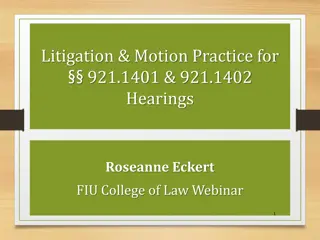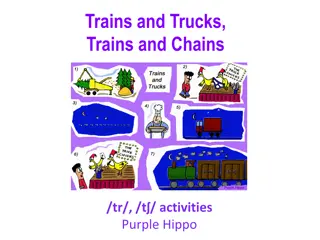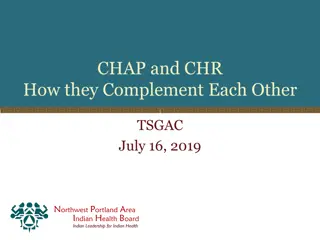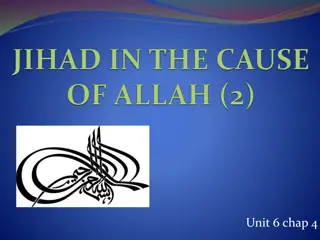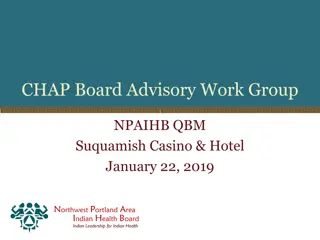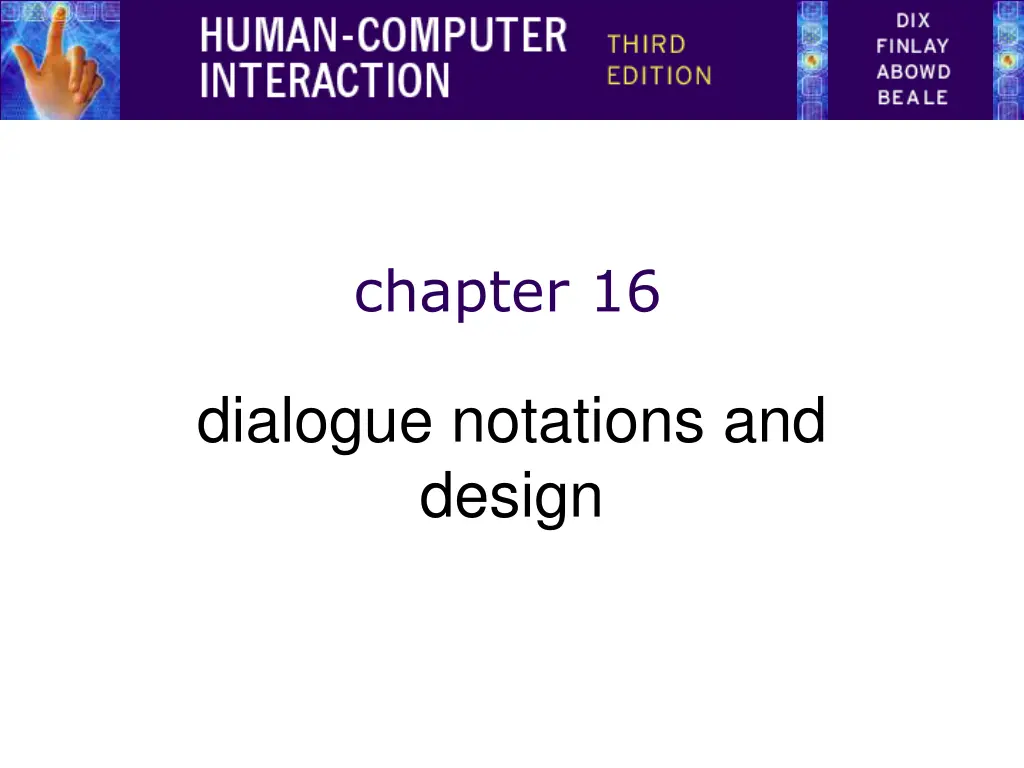
Understanding Dialogue Notations and Design for Effective System Interaction
Explore the concept of dialogue notations and design, encompassing diagrammatic state transition networks, JSD diagrams, flow charts, textual formal grammars, production rules, and CSP. Dive into the structure of human-computer conversation, levels of dialogue, lexical considerations, and more for efficient system interaction.
Download Presentation

Please find below an Image/Link to download the presentation.
The content on the website is provided AS IS for your information and personal use only. It may not be sold, licensed, or shared on other websites without obtaining consent from the author. If you encounter any issues during the download, it is possible that the publisher has removed the file from their server.
You are allowed to download the files provided on this website for personal or commercial use, subject to the condition that they are used lawfully. All files are the property of their respective owners.
The content on the website is provided AS IS for your information and personal use only. It may not be sold, licensed, or shared on other websites without obtaining consent from the author.
E N D
Presentation Transcript
chapter 16 dialogue notations and design
Dialogue Notations and Design Dialogue Notations Diagrammatic state transition networks, JSD diagrams, flow charts Textual formal grammars, production rules, CSP Dialogue linked to the semantics of the system what it does the presentation of the system how it looks Formal descriptions can be analysed for inconsistent actions for difficult to reverse actions for missing actions for potential miskeying errors
what is dialogue? conversation between two or more parties usually cooperative in user interfaces refers to the structure of the interaction syntactic level of human computer conversation levels lexical shape of icons, actual keys pressed syntactic order of inputs and outputs semantic effect on internal application/data
structured human dialogue human-computer dialogue very constrained some human-human dialogue formal too Minister: do you man s nametake this woman Man: I do Minister: do you woman s nametake this man Woman: I do Man: With this ring I thee wed (places ring on womans finger) Woman: With this ring I thee wed (places ring ..) Minister: I now pronounce you man and wife
lessons about dialogue wedding service sort of script for three parties specifies order some contributions fixed I do others variable do you man s name instructions for ring concurrent with saying words with this ring if you say these words are you married? only if in the right place, with marriage licence syntax not semantics
and more what if woman says I don t ? real dialogues often have alternatives: Judge: How do you plead guilty or not guilty? Defendant: either Guilty or Not guilty the process of the trial depends on the defendants response focus on normative responses doesn t cope with judge saying off with her head or in computer dialogue user standing on keyboard!
dialogue design notations dialogue gets buried in the program in a big system can we: analyse the dialogue: can the user always get to see current shopping basket change platforms (e.g. Windows/Mac) dialogue notations helps us to analyse systems separate lexical from semantoc and before the system is built notations help us understand proposed designs
graphical notations state-transition nets (STN) Petri nets, state charts flow charts, JSD diagrams
State transition networks (STN) circles - states arcs - actions/events
State transition networks - events arc labels a bit cramped because: notation is `state heavy the events require most detail
State transition networks - states labels in circles a bit uninformative: states are hard to name but easier to visualise
Hierarchical STNs managing complex dialogues named sub-dialogues Graphics Submenu select graphics Text Submenu select text Main Menu Paint Submenu select paint
Concurrent dialogues - I simple dialogue box Text Style bold italic underline example
Concurrent dialogues - II three toggles - individual STNs click on bold NO bold bold bold click on italic NO italic italic italic click on underline NO u line underline u line
Concurrent dialogues - III bold and italic combined Text Style bold italic underline click on bold example NO style bold only click on italic click on italic click on bold bold italic italic only
Concurrent dialogues - IV all together - combinatorial explosion Text Style bold italic underline bold NO style bold only example underline underline italic italic bold u line bold u line only italic italic bold italic bold italic only underline underline bold italic u line italic u line bold
escapes back in web, escape/cancel keys similar behaviour everywhere end up with spaghetti of identical behaviours try to avoid this ESC Graphics Submenu select graphics normal e.g. on high level diagram normal exit for each submenu plus separate escape arc active everywhere in submenu finish ESC Text Submenu select text Main Menu normal finish ESC Paint Submenu normal select paint finish
help menus similar problems nearly the same everywhere but return to same point in dialogue could specify on STN but very messy usually best added at a meta level click on centre click on circumference from Menu Circle 1 Circle 2 Finish rubber band draw circle press HELP button press HELP button Help Subsystem Help Subsystem
Petri nets one of the oldest notations in computing! flow graph: places a bit like STN states transitions a bit like STN arcs counters sit on places (current state) several counters allowed concurrent dialogue states used for UI specification (ICO at Toulouse) tool support Petshop
Petri net example Bold On Italic On user presses Italic user presses Bold T1 T2 T4 T3 Italic Off Bold Off user actions represented as a new counter transition fires when all input places have counters
State charts used in UML extension to STN hierarchy concurrent sub-nets escapes OFF always active history link marked H goes back to last state on re-entering subdialogue Standby ON OFF RESET Channel Sound 1 H SEL On 2 MUTE SEL SEL Off 3 SEL 4
Delete D1 Flowcharts Please enter employee no.: ____ familiar to programmers C1 read record boxes - process/event - not state Delete D2 Delete D3 Name: Alan Dix Dept: Computing delete? (Y/N): _ Name: Alan Dix Dept: Computing delete? (Y/N): _ Please enter Y or N use for dialogue (not internal algorithm) C2 other answer? Y N Finish C3 delete record Finish
it works! formal notations too much work? COBOL transaction processing event-driven like web interfaces programs structure dialogue structure used dialogue flow charts discuss with clients transform to code systematic testing 1000% productivity gain formalism saves time!! Delete D1 Please enter employee no.: ____ C1 read record Delete D2 Delete D3 Name: Alan Dix Dept: Computing delete? (Y/N): _ delete? (Y/N): _ Please enter Y or N C2 answer? other Y N Finish C3 delete record Finish
JSD diagrams for tree structured dialogues less expressive Personnel Record System greater clarity * login transaction logout add change employee record display employee record delete employee record employee record
textual notations grammars production rules CSP and event algebras
Textual - Grammars Regular expressions sel-line click click* dble-click compare with JSD same computational model different notation BNF expr ::= empty | atom expr | '(' expr ')' expr more powerful than regular exp. or STNs Still NO concurrent dialogue
Production rules Unordered list of rules: if condition then action condition based on state or pending events every rule always potentially active Good for concurrency Bad for sequence
Event based production rules Sel-line first C-point first rest C-point rest rest D-point rest < draw line > Note: events added to list of pending events first and rest are internally generated events Bad at state!
Prepositional Production System State based Attributes: Mouse: { mouse-off, select-line, click-point, double-click } Line-state: { menu, first, rest } Rules (feedback not shown): select-line mouse-off first click-point first mouse-off rest click-point rest mouse-off double-click rest mouse-off menu Bad at events!
CSP and process algebras used in Alexander's SPI, and Agent notation good for sequential dialogues Bold-tog = select-bold? bold-on select-bold? bold-off Bold-tog Italic-tog = . . . Under-tog = . . . and concurrent dialogue Dialogue-box = Bold-tog || Italic-tog || Under-tog but causality unclear
Dialogue Notations - Summary Diagrammatic STN, JSD, Flow charts Textual grammars, production rules, CSP Issues event base vs. state based power vs. clarity model vs. notation sequential vs. concurrent
Semantics Alexander SPI (i) Two part specication: EventCSP - pure dialogue order EventISL - target dependent semantics dialogue description - centralised syntactic/semantic trade-off - tollerable
Semantics Alexander SPI (ii) EventCSP Login = login-mess -> get-name -> Passwd Passwd = passwd-mess -> (invalid -> Login [] valid -> Session) EventISL event: login-mess prompt: true out: Login: event: get-name uses: input set: user-id = input event: valid uses: input, user-id, passwd-db wgen: passwd-id = passwd-db(user-id)
Semantics - raw code event loop for word processor switch ( ev.type ) { case button_down: if ( in_text ( ev.pos ) ) { mode = selecting; mark_selection_start(ev.pos); } ... case button_up: if ( in_text ( ev.pos ) && mode == selecting ) { mode = normal; mark_selection_end(ev.pos); } ... case mouse_move: if (mode == selecting ) { extend_selection(ev.pos); } ... } /* end of switch */ dialogue description - very distributed syntactic/semantic trade-off - terrible!
Action properties completeness missed arcs unforeseen circumstances determinism several arcs for one action deliberate: application decision accident: production rules nested escapes consistency same action, same effect? modes and visibility
Checking properties (i) completeness double-click in circle states? ? double click
Checking properties (ii) Reversibility: to reverse select `line' Graphics Submenu select graphics Main Menu select text select paint
Checking properties (ii) Reversibility: to reverse select `line' click Graphics Submenu select graphics Main Menu select text select paint
Checking properties (ii) Reversibility: to reverse select `line' click - double click Graphics Submenu select graphics Main Menu select text select paint
Checking properties (ii) Reversibility: to reverse select `line' click - double click - select `graphics' (3 actions) Graphics Submenu select graphics N.B. not undo Main Menu select text select paint
State properties reachability can you get anywhere from anywhere? and how easily reversibility can you get to the previous state? but NOT undo dangerous states some states you don't want to get to
Dangerous States word processor: two modes and exit F1 - changes mode F2 - exit (and save) Esc - no mode change Esc F1 F2 edit menu exit but ... Esc resets autosave
Dangerous States (ii) exit with/without save dangerous states duplicate states - semantic distinction F1 F2 edit menu exit any update Esc F1 F2 edit menu exit F1-F2 - exit with save F1-Esc-F2 - exit with no save Esc
Lexical Issues visibility differentiate modes and states annotations to dialogue style command - verb noun mouse based - noun verb layout not just appearance ...
layout matters word processor - dangerous states F1 F2 edit menu exit any update Esc old keyboard - OK F1 F2 edit menu exit Esc Esc 1 ... tab ... F1 F2 F3 ... F4 ...
layout matters new keyboard layout F3 ... Esc F1 F2 intend F1-F2 (save) F1 F2 edit menu exit finger catches Esc any update Esc F1 F2 edit menu exit Esc
layout matters new keyboard layout F3 ... Esc F1 F2 intend F1-F2 (save) F1 F2 edit menu exit finger catches Esc any update Esc F1-Esc-F2 - disaster! F1 F2 edit menu exit Esc
Dialogue Analysis - Summary Semantics and dialogue attaching semantics distributed/centralised dialogue description maximising syntactic description Properties of dialogue action properties: completeness, determinism, consistency state properties: reachability, reversibility, dangerous states Presentation and lexical issues visibility, style, layout N.B. not independent of dialogue
Dialogue Analysis - Summary Semantics and dialogue attaching semantics distributed/centralised dialogue description maximising syntactic description Properties of dialogue action properties: completeness, determinism, consistency state properties: reachability, reversibility, dangerous states Presentation and lexical issues visibility, style, layout N.B. not independent of dialogue
Digital watch User Instructions two main modes limited interface 3 buttons button A changes mode

